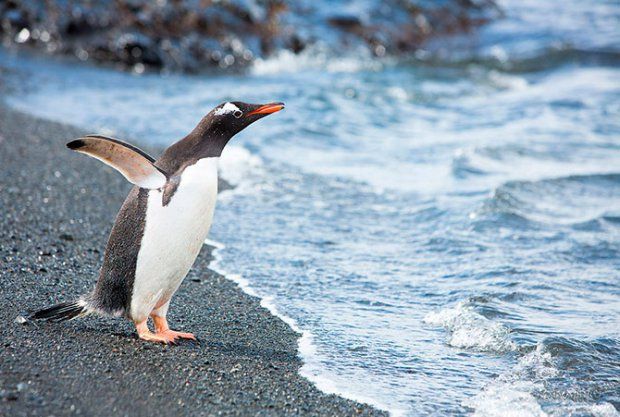Biological features of the beaver
Beaver. Squad Rodents. The beaver family is listed in the Red Book of the Smolensk region. It belongs to category V species status. A restored species, the number and condition of which require constant monitoring.
For many years, local reservoirs, in particular the Vedosa River and the artificial lake in the village of Rybki, were polluted by wastewater from a pig-breeding complex. As a result, the beavers disappeared. After the liquidation of the pig-breeding complex, wastewater began to flow in smaller quantities and the water became cleaner. After some time, beavers appeared in the river again.
Pollution of water bodies and poaching almost led to the complete extermination of the beaver as a species. . Therefore, the students of our school decided to observe individuals of this species.
The beaver is a large rodent whose body length reaches 1 m and weight – 30 kg. The body is massive, the tail is flattened from top to bottom and covered with horny scutes. A hard horny keel stretches from above in the middle of the tail. The tail serves as a rudder underwater and a support on land.
The hairline is sharply divided into coarse hair and a thick soft undercoat. The fur is light brown to almost black. A thick layer of subcutaneous fat and thick wool helps to swim and work in icy water. To make the fur waterproof, the beaver lubricates it with the oily secretion of paired glands.
The toes of the hind legs are connected by a swimming membrane. The claw of the second toe of the hind legs is forked and serves as a kind of fork for combing out ectoparosites. When immersed in water, the ears fold lengthwise and the nostrils close.
Clear films cover your eyes like contact lenses, protecting them from floating debris. The mouth is tightly closed with special skin outgrowths, which leave the incisors on the outside so that they can be used under water. Thanks to these devices, the beaver can swim very quickly.
There are four molars in each jaw. The front paws, like hands, are capable of tenaciously grasping branches or pushing away obstacles in the water.
Large lungs and liver provide him with such reserves of air and oxygen-enriched blood that the beaver can not surface for as long as 15 minutes.
Anterior to the anal glands are paired musk glands, the secretion of which is known as the “Beaver stream”. “Beaver stream” is a healing odorous liquid.
Mating occurs in January - February. Cubs appear after 105-107 days, in April-May. It is no coincidence that beaver babies are born in the spring. At this time there is a lot of fresh food around and beavers have enough time to feed their babies. In one litter there are from one to five cubs, which after one to two days can already swim, and at the age of 3 weeks they begin to feed themselves on plant food. Beavers usually live in families, which consist of a pair of adults and their offspring of the previous and current year.
The potential lifespan of all beavers is the same: 30-35 years, but in natural conditions the vast majority of them live no more than 25 years.
BEHAVIOR FEATURES
When getting ashore, beavers are very wary and often stop working to look around. It is very difficult to see this, as they are nocturnal.A beaver, gnawing a tree, moves around it so that it often falls on the side where the branches and leaves are thicker. A beaver fells an aspen with a diameter of 5-7 cm in two minutes. Sometimes beavers gnaw trees for several years. Having stopped gnawing on one that has not yet been felled, they move on to the second, third..., leaving the nibbled ones, thereby reducing the supply of food along the banks of reservoirs, since some of these trees dry out and become unsuitable for food. Beavers gnaw, chew and carry away some trees in one or two nights, others are cut up gradually, sometimes over 10-20 days, others remain almost untouched in the fall and are used in winter when the animals come to the surface, others dry up, remaining unused.
They prefer to have lunch right next to the creek, where they drag chewed off branches. When danger appears, all they have to do is dive. Beavers are very thrifty; after eating leaves from a branch, they gnaw the bark, turning the branch in their paws, like a man doing corn on the cob. The stripped rod is used to strengthen housing. Sometimes they are put in piles.
METHODOLOGY AND PRACTICE OF RESEARCH WORK
The work was carried out in the vicinity of the village of Rybki, Safonovsky district, Smolensk region. In March 2004, we took a tour along the Vedosa River. On the bank of the Vedosa River near the village of Rybki, a beaver habitat was discovered. A hut made of branches and earth. The entrance to the hut is underwater, the height on the surface is 1.2 m. , 8 meters long. Beavers appeared on the river in the late nineties of the XX century.
In 2005, we continued observing beavers. It was discovered that in the beaver settlement, some of the buildings are used by animals, and some are abandoned and unused. This is probably due to changes in water level throughout the year, since a decrease in the number of beavers in the settlement is not observed.
This year we most carefully studied the material from which beavers build their structures. They are twigs, branches and parts of thin trunks (up to 20-25 cm in diameter). It was established that this material could be fresh, chewed up by the beavers themselves, or old, which simply happened to be “at hand”, the preparations of which they had nothing to do with. Branches and trunks of trees with a diameter of 6-10 cm or more are chewed into pieces, so . because in this case their transportation is easier. The rule is followed: the thicker the trunk, the shorter the parts that are chewed off. The binding material in beaver buildings is silt, the top layer of soil. Along with this, the animals bring fresh and dead parts of herbaceous plants, fallen leaves and other objects.
The Vedosa River (left tributary of Vopi) belongs to the category of small rivers. The river has a slow flow. In the place where beavers settle, the slopes are steep and steep, the opposite bank is gentle.
Tree and shrub vegetation, consisting of soft deciduous trees (willow, poplar, aspen, alder), grows along the shore. Also, the Vedosa River has abundant riparian vegetation (broad-leaved cattail, common reed, bladder sedge, umbrella sedum, knotweed) and aquatic vegetation (yellow egg capsule, floating pondweed, duckweed).
The beaver is an exclusively herbivorous animal. We studied the plants that serve as food for beavers at different times of the year. The table shows that the basis of nutrition is 4 types of trees and shrubs and 4 types of herbaceous plants, which are eaten for most of the year (10-12 months). Their substitutes, which diversify the diet, are 4 more species of trees and shrubs and 11 species of herbaceous plants, eaten over a period of 1-6 months. Other plants serve as additional food, which further diversify the diet of animals. A relative balance of tree-shrub and herbaceous food groups occurs during the transition period (autumn and spring); in summer, a huge predominance of herbaceous plants is observed in the diet, starting in October and in winter (tree-shrub species).
Beaver observations were carried out from April 2004 to October 2005. In 2004, we encountered about five individuals of this species. Fishermen and hunters often see beavers on the river. We talked with one of them.
At the beginning of May 2004, not far from their hut, many fallen large aspen trees were discovered. The branches were chewed off, some of which were probably immediately eaten. Some trunks were cut into pieces and floated across the water to the dwelling. But two fallen aspen trees remained there until September. In September of the same year, a lot of fallen willow was discovered not far from the hut and part of the branches drowned near the hut. They are the ones who prepare wood food for themselves for the winter.





No comments here yet.